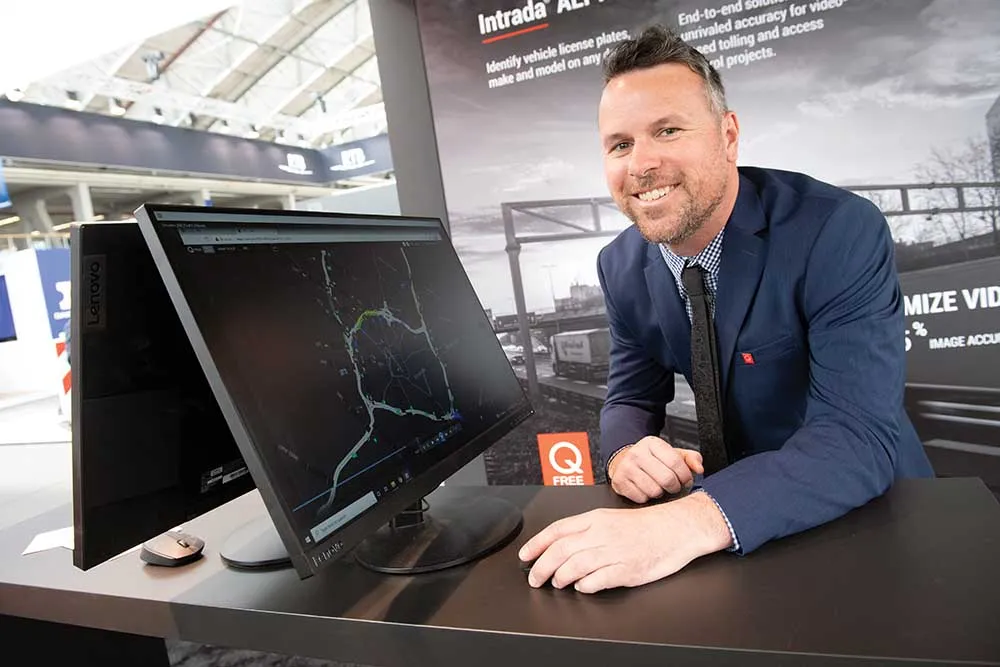The Open Source Application Development Portal (OSADP) web-based portal provides access to and supports the collaboration, development, and use of open-source ITS-related applications. The OSADP has added a number of new ITS-related applications that are available free to the public, including:
Dynamic intermodal routing environment for control and telematics - analysis, modelling and simulation (DIRECTView-AMS) is a visualisation application designed to view the performance measures generated during si
September 26, 2016
Read time: 2 mins
The Open Source Application Development Portal (OSADP) web-based portal provides access to and supports the collaboration, development, and use of open-source ITS-related applications. The OSADP has added a number of new ITS-related applications that are available free to the public, including:
Dynamic intermodal routing environment for control and telematics - analysis, modelling and simulation (DIRECTView-AMS) is a visualisation application designed to view the performance measures generated during simulations using DIRECT software with options to turn on and off scenarios. This tool can be used for evaluating dynamic mobility applications and active transportation and demand management strategies, applications, and concepts.
Intelligent network flow optimisation analysis, modelling, and simulation (AMS) consists of three different applications used in the San Mateo, California, AMS test bed effort---queue warning, speed harmonisation, and cooperative adaptive cruise control. These cross-functional applications were modelled together and used simulation inputs (sensor and connected vehicle data) to generate vehicle-specific commands and desired speed decisions.
Connected and automated speed harmonisation software analyses real-time traffic conditions to calculate and communicate speed commands for connected and automated vehicles (CAVs), with the overall goal of harmonising traffic flow. This application includes software to run on a server that simulates a traffic management centre to collect the data needed to perform a speed control algorithm and communicate results with CAVs; on-board speed control software for CAVs to enable two-way communication with the TMC; and an on-board human machine interface to display information on current speed, commanded speed, confidence in the commanded speed, and the status of surrounding CAVs to the CAV driver.
Dynamic intermodal routing environment for control and telematics - analysis, modelling and simulation (DIRECTView-AMS) is a visualisation application designed to view the performance measures generated during simulations using DIRECT software with options to turn on and off scenarios. This tool can be used for evaluating dynamic mobility applications and active transportation and demand management strategies, applications, and concepts.
Intelligent network flow optimisation analysis, modelling, and simulation (AMS) consists of three different applications used in the San Mateo, California, AMS test bed effort---queue warning, speed harmonisation, and cooperative adaptive cruise control. These cross-functional applications were modelled together and used simulation inputs (sensor and connected vehicle data) to generate vehicle-specific commands and desired speed decisions.
Connected and automated speed harmonisation software analyses real-time traffic conditions to calculate and communicate speed commands for connected and automated vehicles (CAVs), with the overall goal of harmonising traffic flow. This application includes software to run on a server that simulates a traffic management centre to collect the data needed to perform a speed control algorithm and communicate results with CAVs; on-board speed control software for CAVs to enable two-way communication with the TMC; and an on-board human machine interface to display information on current speed, commanded speed, confidence in the commanded speed, and the status of surrounding CAVs to the CAV driver.










